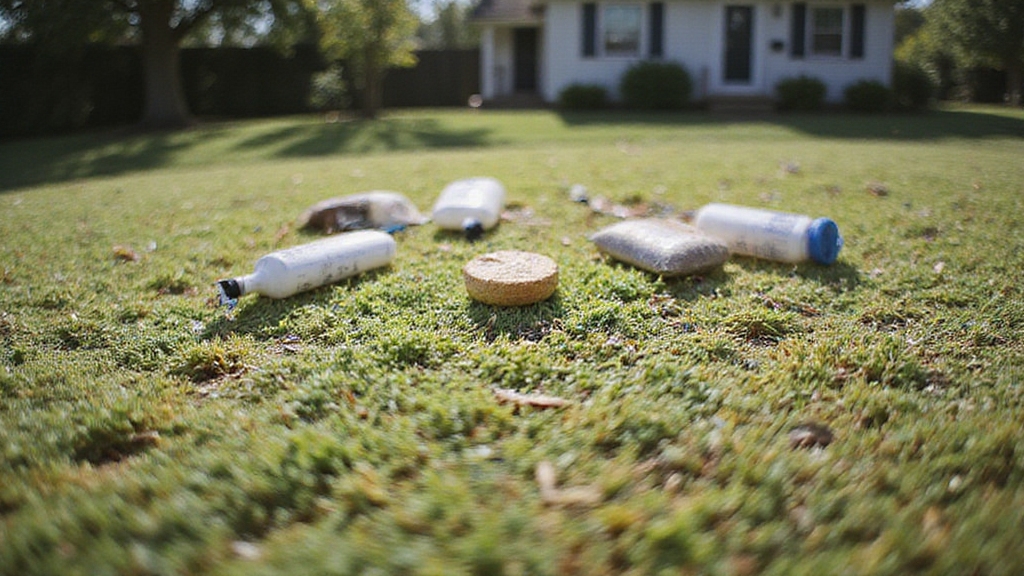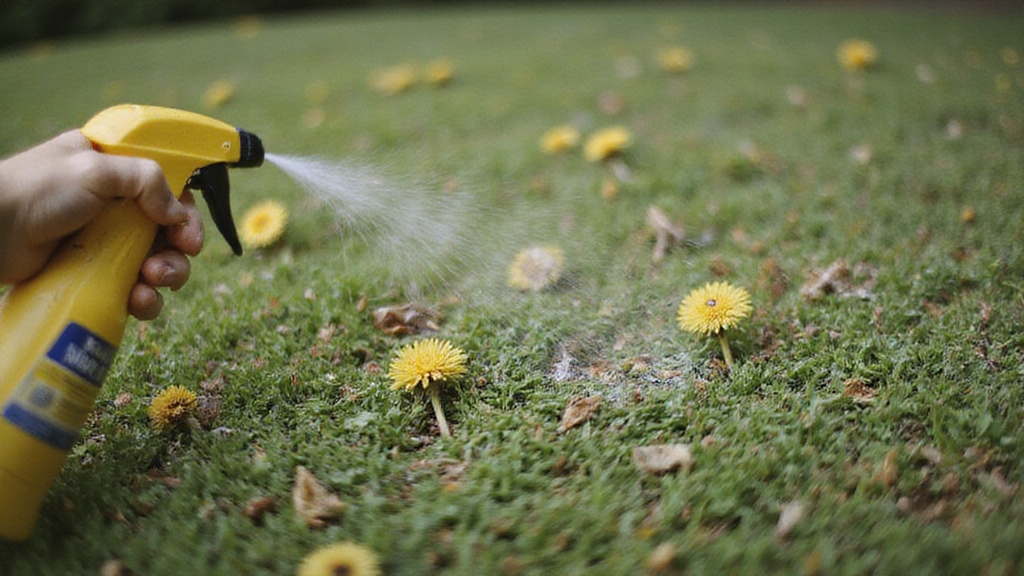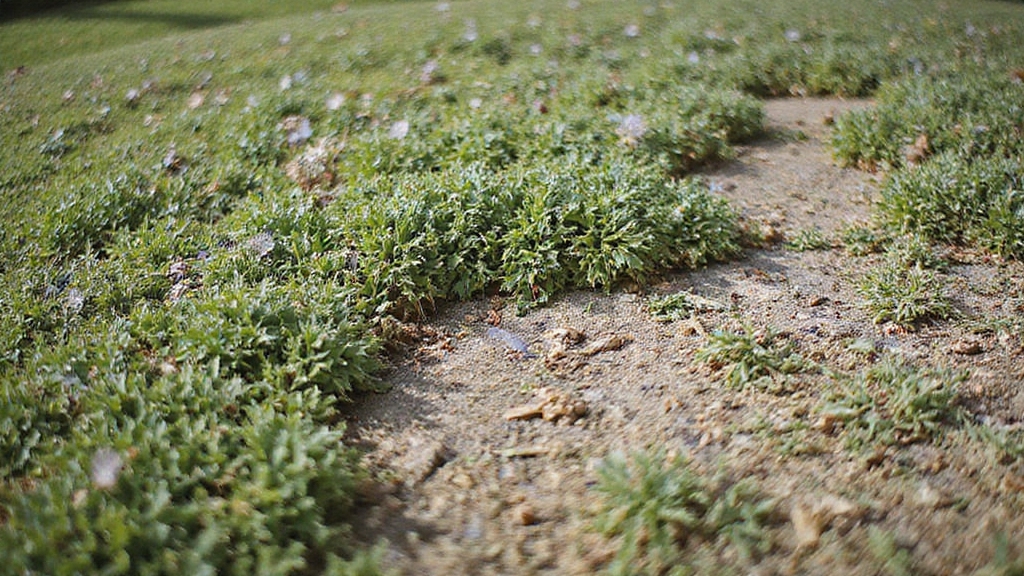Where to dig in?
Choose the best weed killer for lawns based on the specific weeds you’re targeting and your application preferences. Spectracide Weed and Grass Killer works well for broadleaf weeds, while Bio Advanced All-in-One handles both broadleaf weeds and crabgrass effectively.
For tough, persistent weeds, glyphosate-based herbicides deliver fast results, though they’re non-selective and kill all vegetation. Tenacity Turf Herbicide specializes in crabgrass control, and natural vinegar-based products offer safer alternatives for environmentally conscious homeowners seeking gentler solutions.
Top-Rated Weed Killers for Different Lawn Needs

When it comes to tackling lawn weeds, you’ll find that different products excel at targeting specific types of unwanted growth. For broadleaf weeds like Creeping Charlie, Spectracide Weed and Grass Killer delivers reliable results. Bio Advanced All-in-One handles both broadleaf weeds and crabgrass with its 2,4-D formula. Some herbicides are glyphosate-based, which are effective for tough weeds but require adherence to safety precautions.
Grassy weeds require specialized treatment. Tenacity Turf Herbicide selectively controls crabgrass without harming your lawn, while Q4 Plus offers broad-spectrum control for multiple weed types.
For whole lawn applications, you’ll want products like Celsius WG, which provides systemic action across large areas. Specific problems need targeted solutions: Sedgehammer Plus eliminates sedge weeds, and Roundup for Poison Ivy tackles tough brush.
Natural alternatives include vinegar-based herbicides and diatomaceous earth for organic lawn care approaches. When dealing with yellow nutsedge, look for products containing Sentrezone as this active ingredient effectively controls this challenging weed along with other broadleaf varieties and grasses.
Key Features to Consider When Choosing a Weed Killer

Selecting the right weed killer for your lawn requires careful evaluation of several critical features that’ll determine your success in achieving a healthy, weed-free yard.
Herbicide Type Selection
You’ll need to choose between selective herbicides, which target specific weeds while protecting your grass, or non-selective options that kill all vegetation. Selective products like Ortho WeedClear work best for established lawns, while non-selective herbicides suit larger clearing projects. Scotts Turf Builder Weed & Feed uses WeedGrip Technology to control over 50 listed weeds while fertilizing the lawn, making it effective for thickening grass and preventing future weed growth.
Active Ingredient Assessment
Consider whether you prefer chemical compounds like glyphosate and 2,4-D for fast results, or natural alternatives such as vinegar-based products for safer applications around pets and children.
Application Method Preferences
Evaluate your preferred application style: liquid concentrates offer cost-effectiveness, granular products provide pre-emergent control, and ready-to-use sprays deliver convenience for smaller areas. Some products feature specialized applicators like the Sure Shot™ Wand for precision targeting of specific weeds.
Safety and Environmental Impact of Lawn Weed Control Products
Protecting your family, pets, and local environment requires understanding the potential risks that come with lawn weed control products. These chemicals can harm beneficial insects, contaminate water sources, and disrupt soil ecosystems. You’ll want to evaluate safer alternatives that minimize environmental damage while maintaining your lawn’s health. Incorporating organic products, such as kelp meal, can provide nutrients and support beneficial microbes that enhance soil health and resilience.
| Risk Category | Potential Impact |
|---|---|
| Wildlife Safety | Pollinator death, bird habitat loss |
| Water Quality | Runoff contamination, aquatic toxicity |
| Soil Health | Microorganism disruption, earthworm mortality |
When selecting products, look for organic or low-toxicity options. Read labels carefully, apply during calm weather to prevent drift, and avoid treating areas before rain. Assess targeted spot treatments instead of broad applications. Popular herbicides containing glyphosate have been classified as probable human carcinogens by the WHO IARC, raising serious health concerns for regular users. These practices protect your family’s health while preserving the beneficial organisms that keep your lawn naturally resilient and thriving.
Factors That Determine Weed Killer Effectiveness

Beyond choosing safer products for your lawn, understanding what makes weed killers work effectively will help you achieve better results with fewer applications.
Timing Is Everything
You’ll get the best results when you spray weeds that are 3 to 6 inches tall, during their active growing phase. Apply herbicides when temperatures are moderate, humidity is adequate, and no rain is expected for 24 hours. For optimal results, similar to applying granular fertilizers, ensure the treatment covers the entire targeted area without gaps.
Application Method Matters
Use the right spray volume, typically 15-20 gallons per acre, with proper nozzle coverage. Choose foliar application for systemic herbicides, or soil application for pre-emergent types. Hand pulling young weeds remains one of the most effective methods to prevent seed production and future spread.
Environmental Conditions
Soil moisture helps herbicide absorption, while your soil’s pH and organic matter levels affect how the product moves through the ground and reaches weed roots effectively.
Best Practices for Applying Weed Killers on Your Lawn

How can you guarantee your weed killer application delivers maximum results while protecting your lawn from damage? Success depends on proper timing, technique, and equipment selection.
Choose the Right Conditions
Apply herbicides during early morning or late afternoon when temperatures are cooler. Avoid windy days and safeguard no rain is forecast for 24 hours. Check that your soil isn’t saturated, as this causes runoff and reduces effectiveness. Selecting the correct soil type, such as loamy soil, also ensures optimal growing conditions for plants and mitigates weed emergence.
Master Your Application Technique
- Maintain a steady pace and consistent spray height of two feet above grass
- Use spot-spraying for individual weeds rather than broadcasting over entire areas
- Prevent overlapping, which creates concentrated zones that damage turf
Follow Safety Guidelines
Measure your lawn’s square footage accurately, then follow label instructions precisely. Never exceed recommended rates, as more herbicide won’t improve results but will harm your grass and the environment. Ensure your grass is actively growing before applying post-emergent herbicides to avoid treating stressed turf.
Frequently Asked Questions
How Long Should I Wait Before Reseeding After Using Weed Killer?
You’ll need to wait different amounts of time depending on your weed killer type. Glyphosate-based products like Roundup Weed & Grass Killer break down quickly, allowing reseeding after just three days.
However, 2,4-D herbicides require waiting 3-4 weeks, while pre-emergent herbicides can prevent germination for several months. Always check your product’s label for specific instructions, and consider testing a small area first.
Can I Use Weed Killer on Newly Planted Grass?
You shouldn’t use weed killer on newly planted grass because it can kill young seedlings or prevent germination. Wait at least six to eight weeks after seeding, or until you’ve mowed four to five times. Your grass needs time to establish strong roots first.
Instead, hand-pull weeds carefully during this waiting period to protect your new lawn investment.
What’s the Shelf Life of Unopened Weed Killer Products?
You’ll find most unopened weed killers last 2-3 years when stored properly.
Check the manufacturer’s label first, as some products like Ranger Pro can last 3-5 years. Store them in dry locations away from extreme temperatures, and don’t let liquids freeze below 40°F.
If there’s no expiration date, discard after two years for safety and effectiveness.
Should I Water My Lawn Before or After Applying Weed Killer?
You’ll want to water your lawn before and after applying weed killer, but timing matters. Water lightly before application to create damp soil that helps activate the product.
After applying, wait 24-48 hours before watering again. This waiting period lets the herbicide stick to weeds and soil properly.
Then water deeply to activate pre-emergents and guarantee good soil penetration.
Can Weed Killer Damage Underground Sprinkler Systems or Irrigation Lines?
Yes, weed killer can damage underground sprinkler systems if you’re not careful. Corrosive chemicals can degrade plastic pipes, metal components, and rubber seals over time.
You’ll need to flush your system thoroughly after herbicide application to prevent clogging and contamination. Install backflow prevention devices to protect your water supply, and only use herbicides specifically labeled for irrigation system application.
Conclusion
You’ve learned how to choose the right weed killer for your specific lawn needs, whether you’re tackling dandelions, crabgrass, or broad-leaf weeds. Remember to read product labels carefully, apply treatments during ideal weather conditions, and follow safety guidelines to protect your family and pets. With the right product and proper application techniques, you can achieve a healthier, weed-free lawn that becomes the envy of your neighborhood this growing season.

